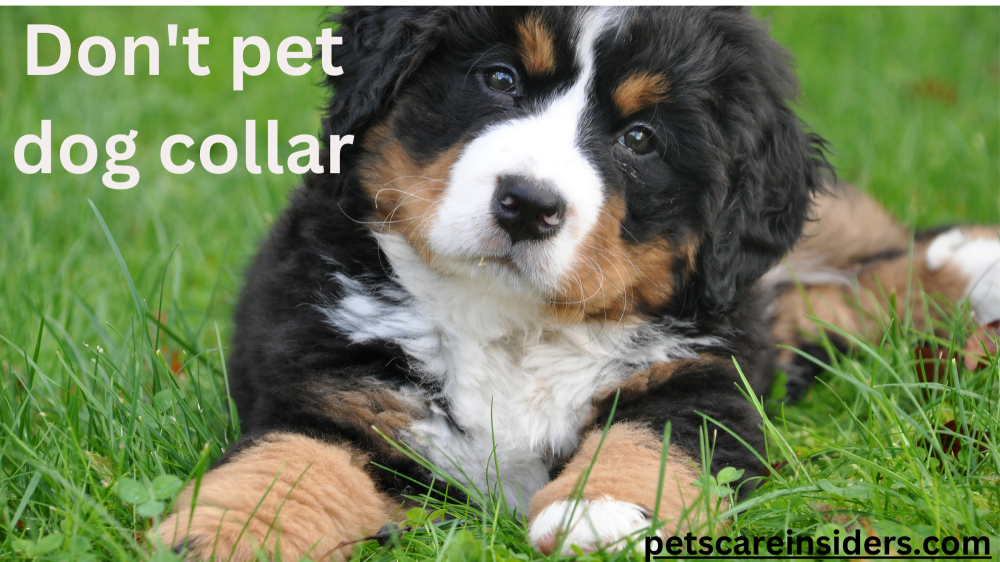Millions of people worldwide enjoy the companionship of their beloved dogs, which brings them great happiness and comfort. However, it’s essential to acknowledge that not all dogs are comfortable with strangers approaching or petting them. A Don’t pet dog collar signals others not to approach or pet the dog without permission. These collars are designed to be visible and informative, helping prevent potentially stressful or dangerous situations for the dog and the people around it. You can learn more about dog care.
What is a Don’t pet dog collar ?
A ‘Do Not Pet’ dog collar is a specialized collar that indicates to others that the dog should not be petted or approached. Unlike a regular collar, these collars typically feature clear and bold lettering that says ‘Do Not Pet,’ ‘Working Dog,’ or ‘Do Not Approach.’ Depending on the dog’s role and purpose, they may also include additional information such as ‘service dog,’ ‘therapy dog,’ or ‘in training.’
Types of Dogs That Benefit from a Don’t pet dog collar
- Service Dogs: Explicitly trained to help people with disabilities, service dogs assist their owners. They might provide medical alerts, emotional support, or help moving around. Petting or attention from strangers must not divert service dogs from their work.
- Canines for Therapy: People in hospitals, nursing homes, classrooms, and other settings can find solace and assistance from therapy dogs. They’ve been taught manners and gentleness in a variety of settings. A “Do Not Pet” collar helps them maintain the composed and subdued manner required for their role.
- Emotional Support Animals (ESAs): ESAs provide emotional support to individuals with mental health conditions. While they do not have the same public access rights as service dogs, they may benefit from wearing a “Do Not Pet” collar to prevent distractions or misunderstandings.
- Working Dogs: Working dogs such as police, search and rescue, and detection dogs are trained to perform specific tasks requiring concentration and focus. These dogs often wear “Do Not Pet” collars to maintain their readiness and prevent interference with their duties.
Benefits of Using a Don’t pet dog collar
- Clear Communication: A “Do Not Pet” collar tells others the dog should not be approached or petted. The dog can concentrate on their tasks as a result of fewer distractions.
- Respect Boundaries: It helps to respect the dog’s space and boundaries, preventing potential stress or discomfort for the dog. This is especially important for dogs that may be nervous, anxious, or reactive to strangers.
Choosing the Right Don’t pet dog collar
When selecting a “Do Not Pet” dog collar, consider the following factors:
A. Visibility and Legibility
- The collar should have clear and easily readable lettering visible from a distance.
B. Durability
- Select a collar that is durable enough to endure regular use and abuse.
- The collar should be securely fastened to prevent accidental removal or loss.
C. Comfort
- Make sure the dog can wear the collar comfortably.
- Adjustable collars allow for a proper fit without causing discomfort or restricting movement.
D. Additional Information
- Consider whether additional information, such as “Service Dog” or “Therapy Dog,” is necessary to provide context about the dog’s role.
E. Size and Fit
- Select a collar that fits your dog correctly. It should be snug enough to stay in place but not too tight to cause discomfort.
Training and Education
Educating yourself and others about respecting a “Do Not Pet” collar is essential. Here are some tips for successful implementation:
- Owner Responsibility: Owners should educate themselves about the appropriate use of a “Do Not Pet” collar and when to use it.
- Public Awareness: Educate the public about the meaning of a “Do Not Pet” collar and why respecting the dog’s role and boundaries is essential.
- Positive Reinforcement: Use positive reinforcement to encourage appropriate behavior around working dogs and service animals.
Conclusion
The ‘Do Not Pet’ dog collar is not just a tool but a powerful communication device that signals to others that a dog should not be approached or petted without permission. It plays a crucial role in maintaining the focus and well-being of service, therapy, and working dogs, enabling them to perform their essential tasks effectively. Dog owners can contribute significantly to making the environment safer and more respectful for these unique animals by choosing a suitable collar and raising awareness of its significance.
